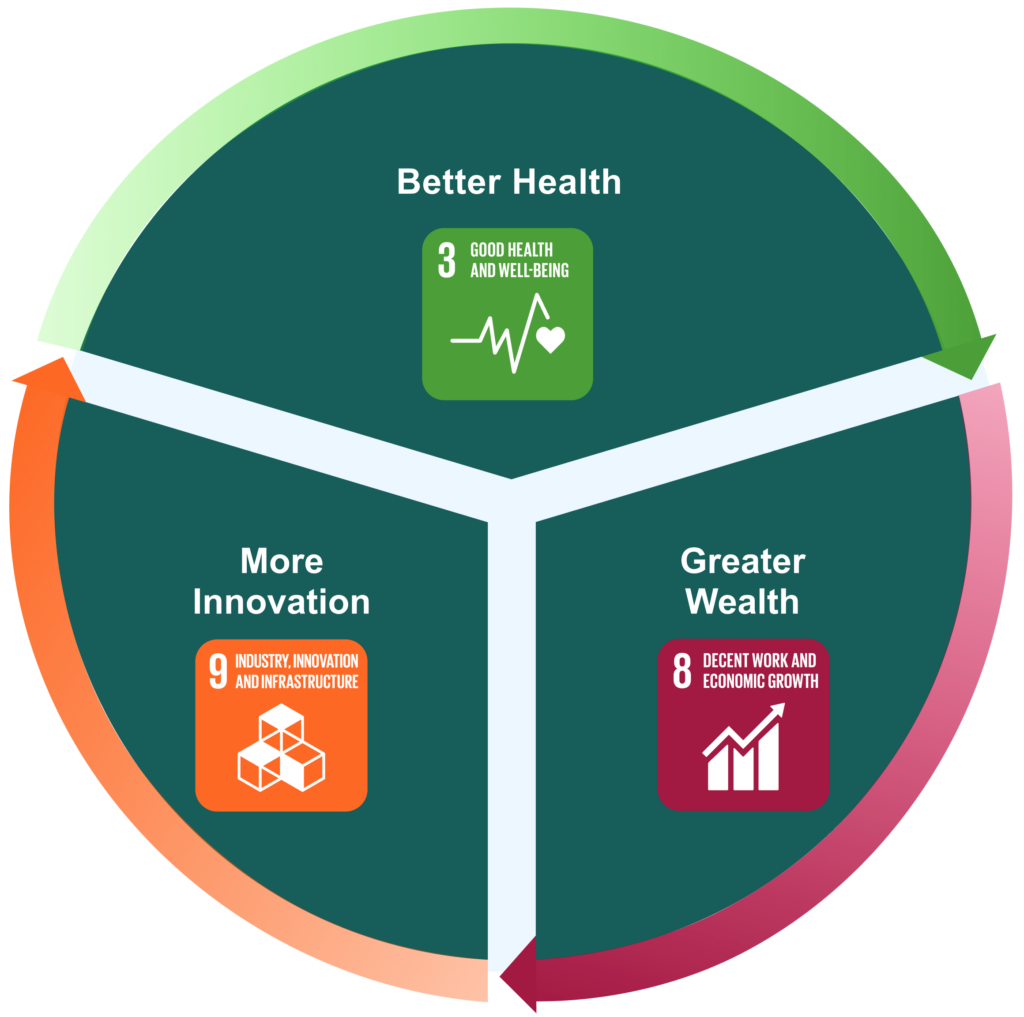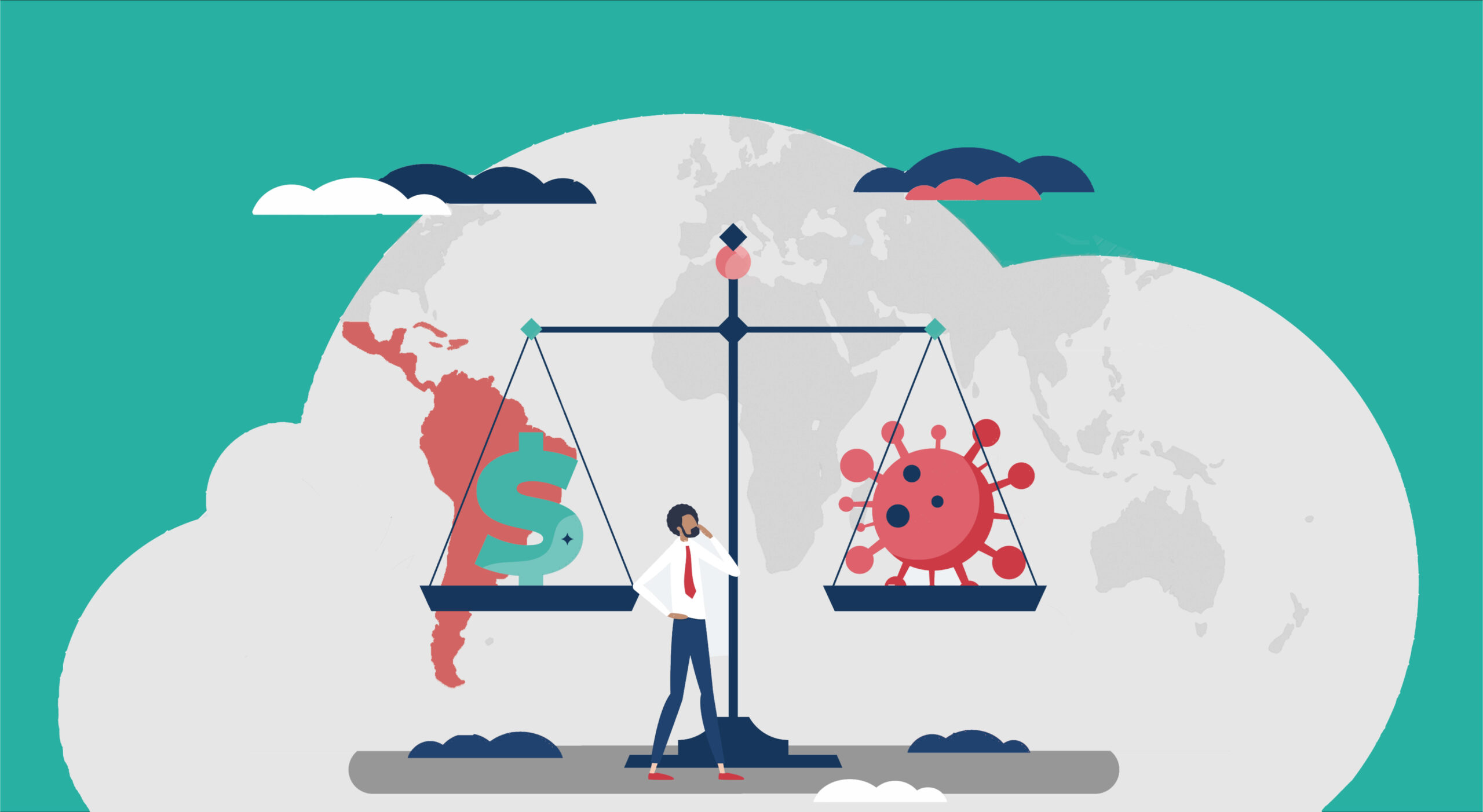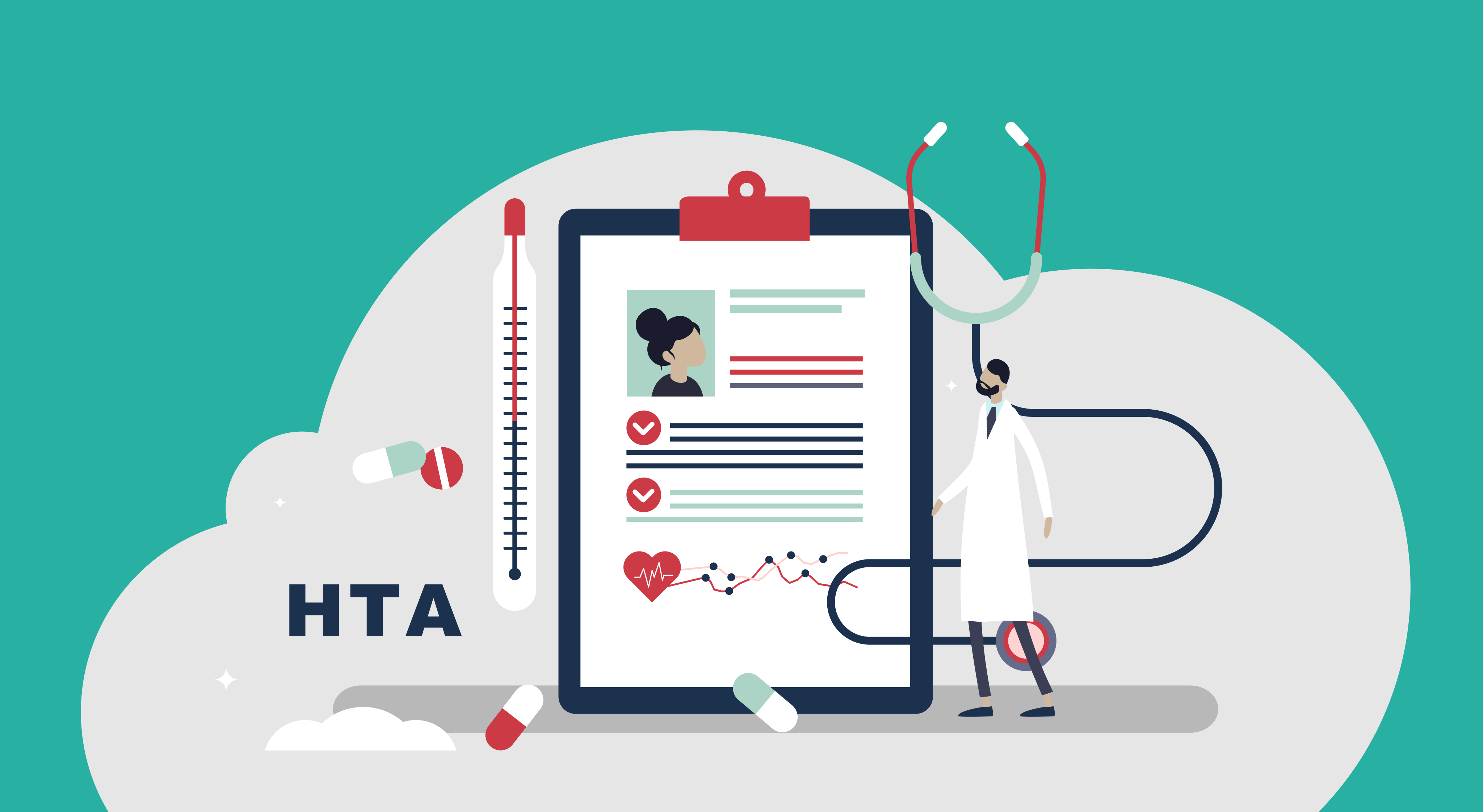Global health metrics: key takeaways
- Health metrics show the holistic value of investments in health and guide stakeholders in directing investments towards the areas which deliver the highest returns in both health and socioeconomic outcomes.
- Sustainable finance models require valid data which can be applied to measure, compare, and support effective investment decision-making.
- WifOR’s approach to health metrics includes three defined categories: reducing the burden of disease, maximizing positive Social Impact, and recognizing the macroeconomic value of the Health Economy.
What are health metrics?
Promoting sustainable financing in health requires valid data which can be used to measure, compare, and support decision-making. Health metrics are an analytical tool used to measure the size and value of a country’s health system – applying data to evaluate the impact of, and return on, investments in health.
Sustainable financing is the term used to create investment models which target improvements in public resources and well-being. This applies to areas such as education, climate, infrastructure, nutrition, and health. In order to attract sustainable financing from public, private, and civic sectors, metrics founded on reliable data must showcase the value of investing in these areas.
Defining sustainable finance: EU’s environmental taxonomy
Sustainable financing relies on embedding socio-environmental aspects in investment decisions, grounded in long-term thinking and measurable outcomes. The EU implemented an environmental taxonomy in 2020. This regulation created a common classification system seeking to translate climate and environmental objectives into specific economic activities. By defining criteria for environmental “sustainability”, the EU taxonomy directs investors towards outcome-oriented projects and activities. The objectives set out in the taxonomy are:
- Climate change mitigation
- Climate change adaption
- Sustainable use and protection of water and marine resources
- Transition to a circular economy
- Pollution prevention and control
- Protection and restoration of biodiversity and ecosystems
In June 2023, the European Commission expanded the taxonomy. The new regulation added further activities to the sustainability framework and increases market transparency for investments, supporting private sector finance accelerate the sustainability transition.
In accordance with the Environmental Taxonomy, a Health Taxonomy is also necessary to operationalize health goals using clear indicators and support investments in measures with the highest possible contribution to society.
WifOR’s approach to health metrics
WifOR’s health metrics assess the value of health investments by the impact on economic growth, societal well-being, and system resilience. These metrics create a common standard and can be applied globally to make clear the value of health – to government, business, and society.
Why do we need health metrics?
In both public and private sectors, investments are made according to the potentially derived benefits, known as Return on Investment (ROI). Health metrics enable targeted investments which deliver improved individual and public health outcomes, enhanced economic growth, and more resilient societies. These metrics also allow for transparent comparison against ROI in other sectors.
However, health expenditures have traditionally been considered as a cost factor due to a focus predominantly on individual medical outcomes. As a result, the assessment of health finance has failed to capture the holistic value of investments – a contributing factor to the polycrisis healthcare systems face.
Health systems are currently struggling to address rapidly rising risk factors for issues such as non-communicable diseases, while global development targets are falling considerably short, and healthcare across the world remains underfunded by a gap of over US $9tn (2019).
Health metrics reveal the value of health
Health metrics broaden the perspective on the value of health. They recognize the socioeconomic value, instigating a paradigm shift which identifies health to be one of the most lucrative investments. From the macroeconomic sector of the Health Economy to the Social Impact on citizens’ productive capacity, health investments drive cyclical progress while accelerating political targets – such as the UN’s Sustainable Development Goals (SDGs).
Health metrics: how can global health be sustainably financed?
WifOR’s approach to health metrics contains three defined categories: quantifying where the burden of disease is acute, maximizing positive Social Impact, and measuring the value of the Health Economy sector. Our research also identifies a positive feedback loop between investing in innovation, improved health, and greater wealth – leading to more resources which can be reinvested.
Tackling burden of disease
Ill-health has consequences for the well-being of those directly affected, but it also carries a burden for society and the economy. Disease increases mortality, morbidity, and disability among those affected, which results in a loss of productive potential – through both paid and unpaid (including care, household activities, volunteering) work. By applying metrics which calculate the burden of specific diseases, investments can be directed towards areas which deliver the greatest return in economic and societal terms.
Example: In Germany, cardiovascular disease (CVD) carries an annual socioeconomic burden of 55 million hours (€1.1bn) and 1.9 billion hours (€23.4bn) in paid and unpaid work respectively. The Heart and Brain Alliance (Herz-Hirn-Allianz) is targeting the reduction of CVD incidents by 30% in Germany by 2030. Achieving this target would mean a yearly return of 16.5 million hours (€342m) in paid work and over half a billion hours (€7bn) in unpaid work.
Health investments targeting prevention, improved access to healthcare, and an enhanced understanding of the disease (incl. origin, risk factors, treatment) have been identified as the most effective approaches to reducing the burden of CVDs in Germany.
Increasing human capacity
Effective health interventions have a positive impact for the individual well-being of patients and those indirectly affected (carers, patient’s support network). This means an improved quality of life, extended lifetime, and a raised potential for productivity, known as human capacity. Health metrics quantify the increase in productive potential to highlight the societal value of investing in innovation. WifOR’s Social Impact model translates the benefit health innovations have for society into Gross Value Added or average gross wages, a monetized format compatible with modern national accounting systems. Expressing Social Impact in monetary terms allows investors to compare returns in health with other sectors.
Example: Type 2 diabetes mellitus (T2DM) accounts for over 90% of diabetes cases globally. Early intensified treatment in newly diagnosed adults with T2DM in Mexico, compared against initial monotherapy followed by subsequent treatment intensification, was found to have a Social Impact of 13 million saved hours over 10 years. This translates into an avoided productivity loss of US $54 million.
Early intensified treatment for T2DM enables chronically ill patients to purse daily activities and continue working. Health metrics spotlight the value of this innovation not only to the health of citizens, but also to societal well-being and economic growth.
Recognizing the value of the Health Economy sector
As with every other sector, the health industry is a component within the national economy. However, unlike most other sectors, the value of the Health Economy is typically underestimated. WifOR’s Health Economy Reporting measures the size, impact, and significance of the Health Economy – enabling comparison between Health Economies among countries as well as other industries.
Using data based on Gross Domestic Product (GDP) per capita, Gross Value Added (GVA), and employment effects, WifOR’s Health Economy Reporting model develops a comprehensive measurement for the impact of health investments on the overall economy.
Example: In Europe, the Health Economy makes up not only the largest sector in the overall economy, but also yields high returns in growth, employment, and exports. The value of the EU’s Health Economy lies at €1.375bn (2019), outgrowing the overall economy by 20% over the previous five years. Meanwhile, every seventh job throughout the EU is directly supported by the Health Economy and over 10% of total exports come from the sector (2019).
The EU’s Health Economy is a driver for economic growth, employment, and trade balance as well as a stabilizer for inflationary pressure. The economic value of health maps similarly onto the global scale, representing 7.6% of global GVA and supporting a workforce of nearly 200 million people. By measuring the size and impact of the Health Economy, stakeholders in the private and public spheres are able to recognize the macroeconomic return on health investments.
Health investments stimulate a positive feedback loop
Returns on health investments are not isolated from one another. Between the defined categories in WifOR’s health metrics, impacts have positive effects leading to progress in health, growth, and innovation.
Innovation in healthcare, such as the development of a vaccine or a new medical procedure, improves available healthcare and a population’s health. In turn, better health raises the human capacity in an economy, meaning greater productive potential and consequently higher, more resilient growth. As a result, the economic growth stimulated means more fiscal space with which to reinvest in innovation. The outcome is cyclical progress in health, growth, and innovation – triggering a positive feedback loop.
Achieving political targets through health metrics
The United Nations has set 17 targets on its 2030 Agenda, termed the Sustainable Development Goals (SDGs). While several targets directly address health, such as SDG 3 (better health and well-being for all), many others can be achieved through a paradigmatic shift in the perception of health. Health metrics identify the holistic impact of health investments, incorporating the contributions to other development targets. For example, investments in health drive resilient economic growth (SDG 8) and foster innovation (SDG 9), while also reducing poverty (SDG 1) by supporting gainful employment and improving citizen well-being. Recognizing the holistic value of investments is essential to develop the sustainable finance models necessary for healthy, prosperous societies.













